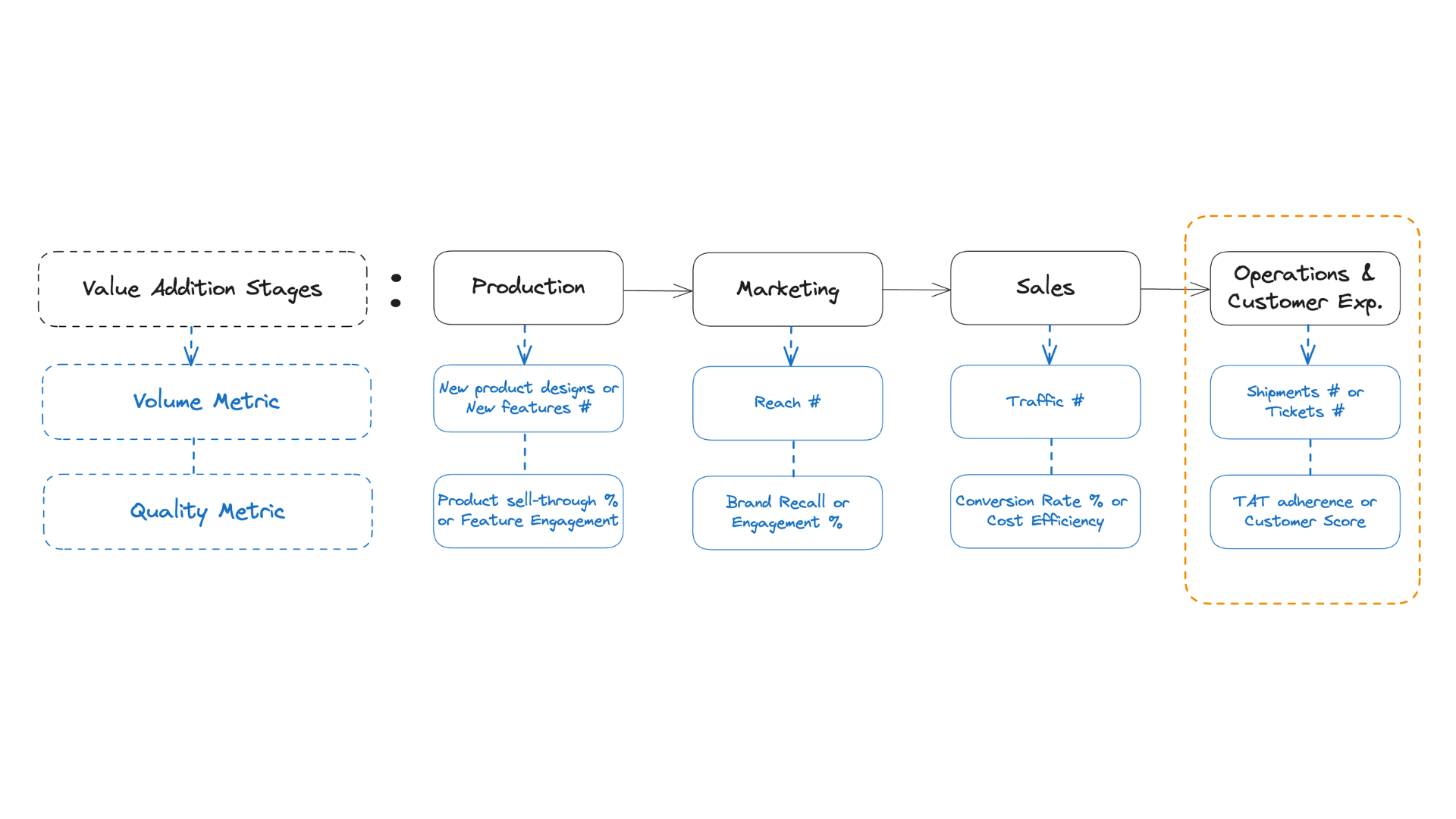What is the Metric Hierarchy for Operations stage?
We now move to Operations as a value addition stage. Operations encompass all the activities required to effectively manage, deliver, and support products or services.
A focused metric hierarchy in this stage ensures that operational activities are aligned with overall business efficiency and customer satisfaction.

Importance of Operations Metrics:
Operational metrics are critical in measuring and managing the efficiency, reliability, and quality of business processes. They help in identifying bottlenecks, reducing costs, improving customer service, and ensuring timely delivery of products or services.
In the hierarchy, top-level metrics often reflect broad operational goals, while subsequent levels provide detailed insights into specific operational aspects.
Top-Level Operations Metrics:
At the top of the operations metric hierarchy, businesses might focus on the following metrics to get a high-level view of operational efficiency and quality:
- - Order Fulfillment Time: Measures the speed from order receipt to delivery, crucial for customer satisfaction and operational efficiency.
- - Inventory Turnover: Reflects how often inventory is sold and replaced over a period, indicating the efficiency of inventory management and product demand.
- - Customer Service Satisfaction: Gauges the quality of post-sale support and service, impacting customer loyalty and repeat business.
Breaking Down Top-Level Operations Metrics:
To delve deeper into the operational efficiency and quality, we break down the top-level metrics into their independent components. This approach provides more granular insights:
- - From Order Fulfillment Time: We drill down to 'Average Processing Time' and 'Average Shipping Time,' providing insights into specific stages of order fulfillment.
- - From Inventory Turnover: This can be dissected into 'Time-to-Restock' and 'Stock-Out Frequency,' offering a detailed view of inventory management efficiency.
- - From Customer Service Satisfaction: We explore further into metrics like 'Issue Resolution Efficiency' and 'Customer Feedback Scores,' which shed light on different aspects of service quality.
Methodical Application of Metric Hierarchy in Operations:
Implementing a metric hierarchy in operations involves a systematic approach. Start with broad, top-level metrics that reflect overall goals. Then, dissect these into more specific, actionable metrics that provide detailed insights into various operational aspects. This method allows businesses to pinpoint specific areas needing improvement and monitor the impact of changes at different operational levels.
For example, by breaking down 'Order Fulfillment Time' into processing and shipping times, a business can identify where delays occur and strategically target improvements. Similarly, dissecting 'Customer Service Satisfaction' into more specific metrics enables a targeted approach to enhancing different facets of customer support.
This structured methodology not only optimizes operational processes but also aligns them closely with customer satisfaction and business goals.
Takeaway:
In Operations, a well-defined metric hierarchy is essential for maintaining smooth, efficient, and customer-focused business processes. Understanding and optimizing these operational metrics is key to ensuring that the business not only delivers value effectively but also builds a foundation for sustained growth and customer satisfaction.